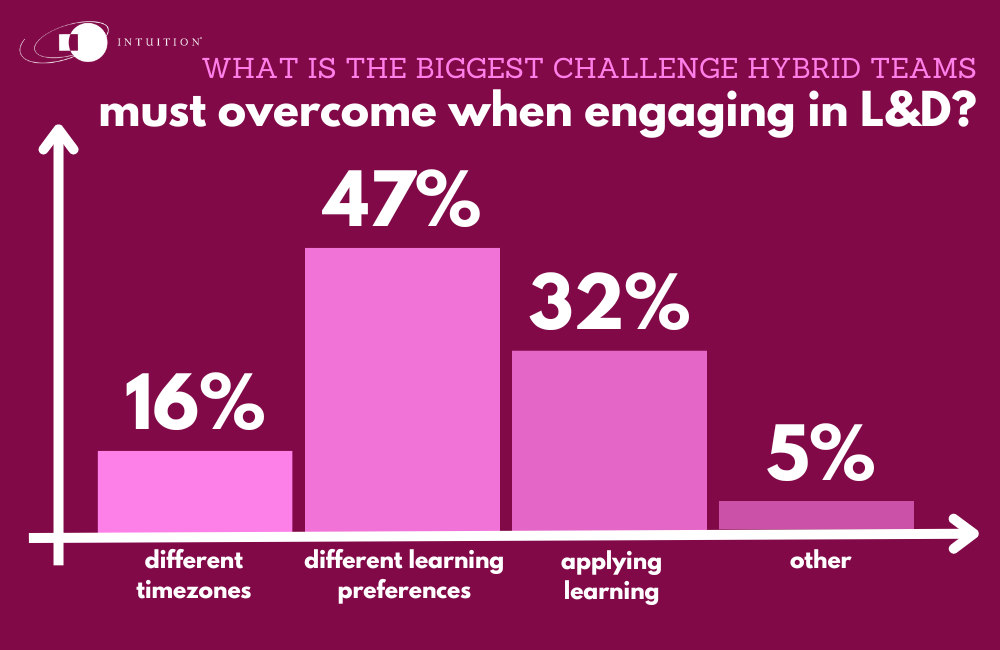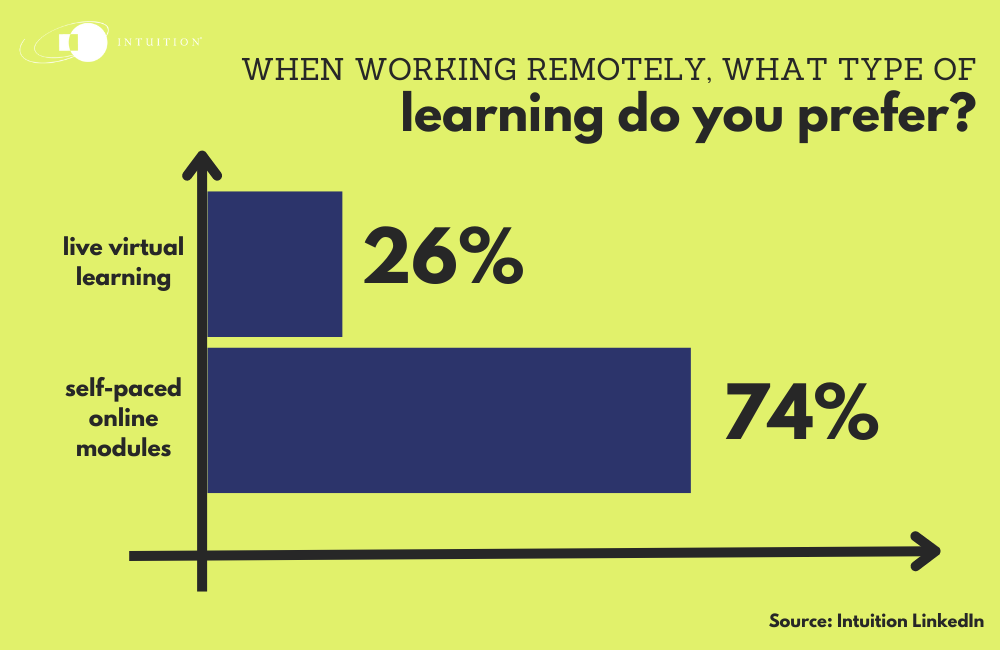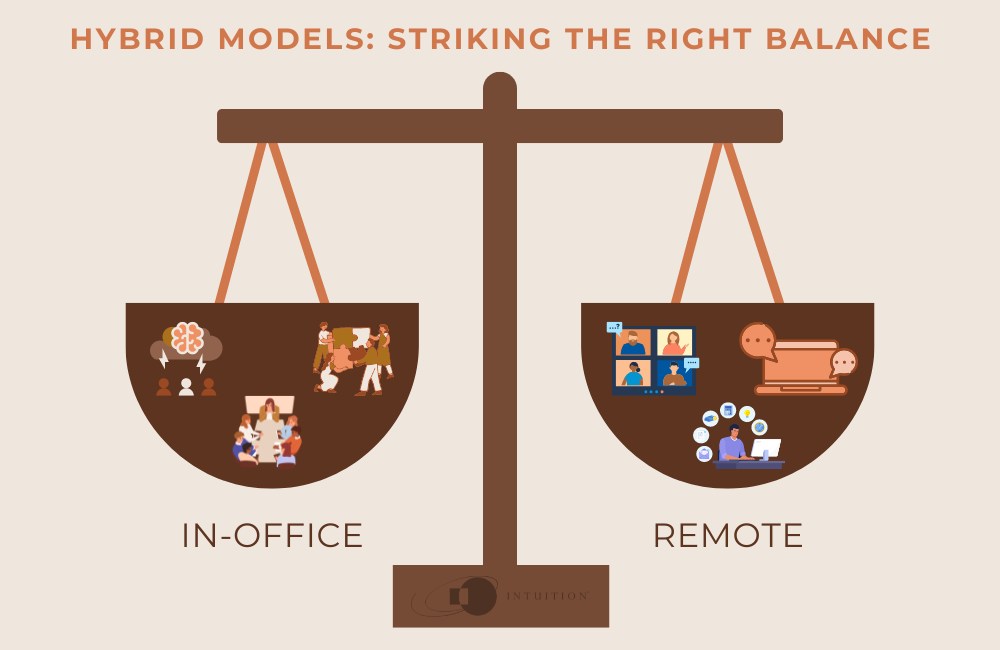How hybrid work eases the transition for new hires
The COVID-19 pandemic transformed the way businesses operate, leading to a shift in the standard working model. This new reality is characterized by hybrid work models, a combination of remote and in-office work, which has emerged as the “new normal.”
This article aims to analyze the role hybrid work models play in easing the transition for new hires, highlighting how they cater to diverse preferences and enhance productivity.
Other articles in this series:
[Trends shaping the of future onboarding in 2024]
[Unpacking the challenges new hires face in 2024]
[How networking fosters professional relationships for new hires]
[How continuous learning and development shapes success for new hires]
Introduction to the new normal: Hybrid work models
The hybrid work model is a flexible work arrangement that enables employees to split their time between working remotely and working in a traditional office environment. This mix offers a middle ground between conventional office-based work and full-time remote work, providing a blend of flexibility and structure.
This new model has been gaining traction in the post-pandemic era as organizations strive to adapt to the changing circumstances. The blend of remote and in-person work promotes a culture of flexibility, opening up new opportunities for employees and employers alike. It also provides an opportunity to reimagine the future of work, paving the way for more inclusive, nimble, and resilient workplaces.

Role of hybrid work models in onboarding fresh recruits
Transitioning into a new job can be daunting for fresh recruits. However, hybrid work models can ease this process by offering flexibility and choice. The ability to work remotely can alleviate some of the stress associated with starting a new job, such as commute anxiety and adapting to a new physical environment.
At the same time, the opportunity to work in-office allows new hires to witness first-hand the company culture, engage with new colleagues, and establish a physical connection with the organization. Thus, a hybrid work model can provide a balanced introduction to the company, its culture, and the specifics of the role.
Moreover, hybrid work models can help new hires adapt at their own pace. They can choose to start remotely, gradually easing into the in-office environment, or vice versa. This flexibility can make the transition smoother and less overwhelming for new employees.
One of the lesser-talked-about issues arising out of the pandemic is in-person social anxiety particularly for people in their late teens and early twenties. At a time that is typically considered an important developmental stage for this particular cohort, interactions were limited to the online sphere. This lack of real, face-to-face contact, has caused their in-person social skills to atrophy, spurring anxiety in many when forced to interact with others in the real world.
The perks of flexible schedules for new hires
Flexible schedules are a significant perk offered by hybrid work models. They allow new hires to structure their workday around their personal commitments and peak productivity hours, promoting a healthier work-life balance. This flexibility can be particularly beneficial for recruits who are juggling multiple responsibilities outside of the workplace or who have non-traditional working hours.
Moreover, flexible schedules can help reduce burnout and increase job satisfaction. By providing employees with greater control over their schedules, employers can foster a positive work environment and boost employee morale. This can, in turn, increase employee engagement and productivity.
Lastly, flexible schedules can also attract a diverse pool of talent. For instance, they can enable organizations to hire individuals who may not be able to work standard office hours due to personal commitments or health conditions. This can lead to a more inclusive and diverse workforce, which can drive innovation and business success.
Choice of work environment: A major advantage in hybrid models
One of the major advantages of hybrid work models is the choice of work environment. Employees can choose where they want to work based on their tasks, mood, or personal preferences. This can contribute to increased job satisfaction, productivity, and overall well-being.
Working remotely offers the comfort of working from home or any other preferred location. It eliminates commuting, allowing employees to save time and money and to reduce stress. It also provides a quiet and distraction-free environment, which can be particularly beneficial for tasks that require deep concentration.
On the other hand, working in-office offers the chance to interact face-to-face with colleagues, fostering collaboration and team bonding. It also provides access to resources and facilities that may not be available at home. Thus, the choice of work environment in hybrid models caters to the varying needs and preferences of employees, making the work experience more satisfying and productive.
Technology: The backbone of hybrid work models
Technology plays a crucial role in supporting hybrid work models. Tools and platforms that facilitate communication, collaboration, and task management are essential for a seamless blend of remote and in-office work. They enable employees to stay connected and productive, regardless of their physical location.
Communication tools such as video conferencing software, instant messaging apps, and email platforms enable real-time communication and collaboration among team members. They help maintain team cohesion and ensure that everyone stays on the same page, even when working remotely.
Task management tools, on the other hand, help keep track of tasks and deadlines, ensuring that work gets done efficiently. They also provide visibility into team members’ workloads, facilitating workload distribution and preventing burnout.
Moreover, technology can also provide data and insights that can inform decision-making and strategy formulation. For instance, productivity tracking tools can provide insights into employees’ work patterns, helping managers identify bottlenecks and devise strategies to enhance productivity.

Remote and in-person work: Striking the right balance
Striking the right balance between remote and in-person work is crucial for the success of hybrid work models. Too much remote work can lead to feelings of isolation and disconnection; too much in-office work can undermine the benefits of flexibility and autonomy and have a negative impact on morale.
Employers need to ensure that remote workers are not left out of important conversations and decisions. Regular check-ins, virtual team meetings, and inclusive communication practices can help remote employees feel connected and engaged.
On the other hand, in-office work should be purposeful and meaningful. It should be reserved for activities that truly benefit from face-to-face interaction, such as brainstorming sessions, team-building activities, and important meetings. This way, employees can make the most out of their in-office time and reap the benefits of face-to-face interaction.

The impact of hybrid work models on productivity
Hybrid work models can have a positive impact on productivity. By offering flexibility and choice, they can help employees work in ways that best suit their needs and preferences. This can lead to increased job satisfaction, motivation, and ultimately, productivity.
Moreover, the ability to work remotely can eliminate time wasted on commuting, freeing up more time for productive work. It can also provide a quiet and distraction-free environment for tasks that require deep concentration.
In addition, flexible schedules can enable employees work during peak productivity hours. This can lead to higher quality work and increased output.
However, it is important to note that productivity in a hybrid work model depends on several factors, including the specific nature of the job, the work habits and preferences of the individual, and the culture and policies of the organization. Therefore, employers need to take a holistic approach to promoting productivity in a hybrid work environment.
Catering to diverse preferences: One size does not fit all
When it comes to work arrangements, one size does not fit all. Different individuals have different needs, preferences, and work habits. Therefore, a flexible and inclusive approach is key to making hybrid work models function effectively.
Some employees may prefer working remotely most of the time due to personal commitments or the nature of their work. Others may prefer a more balanced mix of remote and in-office work, seeking the social interaction and structure provided by the office environment.
Employers need to recognize these diverse preferences and provide options that cater to them. This can involve providing different types of workspaces, flexible schedules, and supportive policies and practices. By doing so, employers can ensure that all employees feel valued and supported, regardless of their work arrangements.

Future of work: The increasing relevance of hybrid models
As we move toward the future of work, the relevance of hybrid models is only set to increase. The pandemic has shown that flexible and remote work is not only possible but can actually be beneficial for both employees and employers.
Hybrid work models can provide the best of both worlds, combining the flexibility of remote work with the structure and social interaction of in-office work. They can promote work-life balance, increase job satisfaction, and enhance productivity.
Moreover, they can make organizations more resilient and adaptable, enabling them to navigate future disruptions and changes in the work environment. Therefore, embracing hybrid work models can be a strategic move for organizations, positioning them for success in the future of work.
Conclusion: Embracing hybrid work models as the new normal
In conclusion, hybrid work models are becoming the new normal, reshaping the way we work and redefining the future of work. They offer numerous benefits, including flexibility, choice of work environment, and increased productivity.
For fresh recruits, hybrid work models can ease the transition into a new job, providing a balanced introduction to the company and the job role. They also cater to diverse preferences, making the work experience more satisfying and inclusive.
Therefore, embracing hybrid work models can be a beneficial short- and long-term move for organizations. It can be a key strategy for driving employee satisfaction, productivity, and business success in the ‘new normal’.
So, as we navigate this new reality, it is time to embrace the hybrid work model, leveraging its benefits to create more flexible, inclusive, and resilient workplaces.


